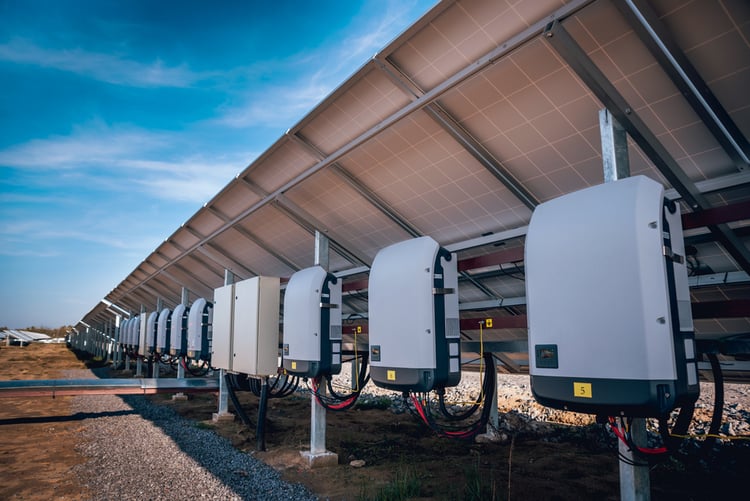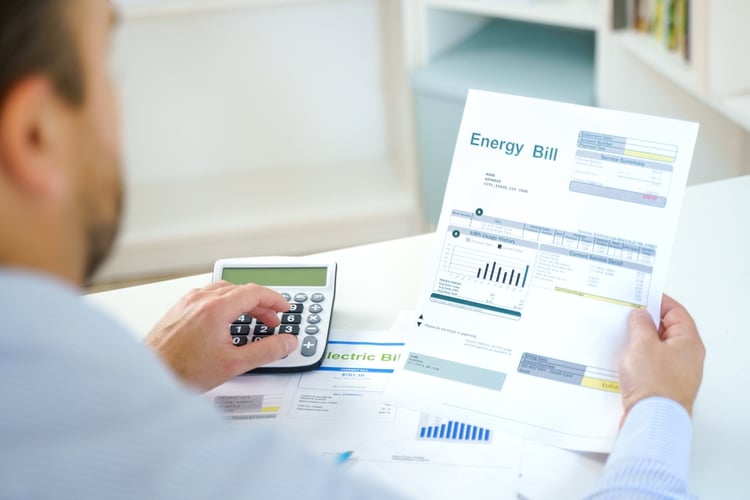What Is a Solar PV System and How Does It Save on Energy Bills?

There are two main ways to reduce power bills in buildings, and they can be combined for greater savings: consuming less energy, or generating electricity onsite to offset consumption. Solar panels are the most popular option for onsite generation, since they can adapt to almost any building. If you have a large enough roof area or ground area that is not covered by shadows, installing a solar photovoltaic system is a viable option.
Get a professional solar PV system design. Save on power bills and cut your emissions.
Photovoltaic modules are the visible part of a solar energy system, but they must be combined with other components to achieve a suitable power supply for your building. Solar panels generate voltage and current when exposed to sunlight, but they are direct current (DC) sources, just like batteries. To use electricity from PV modules in homes and businesses, their output must be converted into alternating current (AC) with an inverter.
Main Components of a Solar PV System

Photovoltaic modules are the basic building blocks of a solar power system, and they must be wired together and attached firmly to your roof or ground space. Wiring is accomplished with MC4 connectors and PV cable, while the structural attachment can be accomplished with different types of racking systems. Depending on your type of roof, the solar racking system may be attached with clamps or penetrating mounts, or held in place with ballasted supports.
Solar panels are then wired together into series string circuits, which are then connected to an inverter. PV modules are grouped depending on their orientation and power output profile; groups of modules wired together operate more efficiently when their power output has a similar behavior during the day.
String circuits are connected to solar inverters, and the maximum number of solar panels in each circuit is determined by the inverter capacity. Some solar inverters use power optimizers, which are devices installed on each solar panel to boost productivity. Alternatively, you can install a microinverter on each solar panel, and wire them together in a parallel AC circuit just like your home appliances.
Regardless of your system configuration, the solar inverter accomplishes two important functions:
- Converting the DC power output of your solar panels into an AC power output that is suitable for electrical devices.
- Synchronizing the AC voltage produced by the solar array with the AC voltage delivered by the local power company.
When you have a grid-tied solar power system, your building can use electricity from your PV array and the grid simultaneously, with no need for manual switching. You can also export surplus solar energy to the grid in exchange for a power bill credit, whenever generation is higher than your building consumption.
How a Solar PV System Reduces Your Power Bill

There are two main ways in which solar panels reduce your monthly energy bills:
- They generate power for your electrical devices, and this amount is subtracted from your monthly consumption.
- If allowed by local regulations, you can also sell solar power to the local electric company, and get a power bill credit in return.
This second option is great when you cannot consume all the electricity produced by your solar panels. For example, this happens during weekends if you have a business that only operates from Monday to Friday.
In the case of New York City, solar panels can also help you avoid emission penalties under Local Law 97 of 2019. Starting from 2024, this law imposes a penalty of $268 for every metric ton of CO2-equivalent over your building’s annual limit. LL97/2019 has assigned a carbon footprint of 0.000288962 tCO2-eq when using grid electricity, but this is reduced to zero when using onsite solar power. This means a commercial PV array that produces 300,000 kWh/year would lower building emissions by 86.7 tCO2-eq per year, saving over $23,200 in emission penalties!
When combined with heat pump systems, solar panels can also help you save fossil fuels like natural gas or propane. Since heat pumps run 100% with electricity, they can use the output of an onsite solar array. Heat pumps can be used for space heating and hot water, eliminating the need for combustion-based heating systems.

Michael Tobias
Michael Tobias, the Founding Principal of NY Engineers, currently leads a team of 150+ MEP/FP engineers and has led over 4,000 projects in the US
Join 15,000+ Fellow Architects and Contractors
Get expert engineering tips straight to your inbox. Subscribe to the NY Engineers Blog below.

